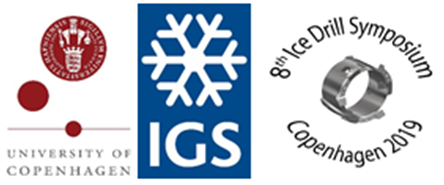Speaker
Description
Since 1957-58 IGY only few penetrations through glacial ice-bedrock interface took place. Essential progress in ice drilling and new scientific goals stimulate development of drilling and sampling technique of rock-imbedded ice and sub-glacial bedrock. There are two objectives: 1) penetrate through natural obstacle and continue ice coring and 2) sampling of glacier-bedrock interface materials. Considering ice coring operation the penetration through the obstacle requires drilling of the same diameter borehole as in above glacier ice. The glacial interface sampling in limited depth interval can be achieved by smaller diameter drilling instrument compared to an ice coring drill. Industrial drilling provides essential information about rock drilling to determine torque, specific pressure on the bit, cutting speed and parameters of the kerf flushing. At the same time, industrial drilling currently do not operate with cable suspended drills. Therefore, specific knowledge and new sub-glacial drilling technique development are also required. Here we present summary of our laboratory drilling experiments of ice-rock composites and granite samples. The last was done by standard industrial drill bits and thin 127 mm outer diameter coring drill bit. In addition, we discuss concept of cable suspended lightweight drill for rock and ice-rock composites drilling-sampling system. The system can use conventional ice coring superstructure and power system.

